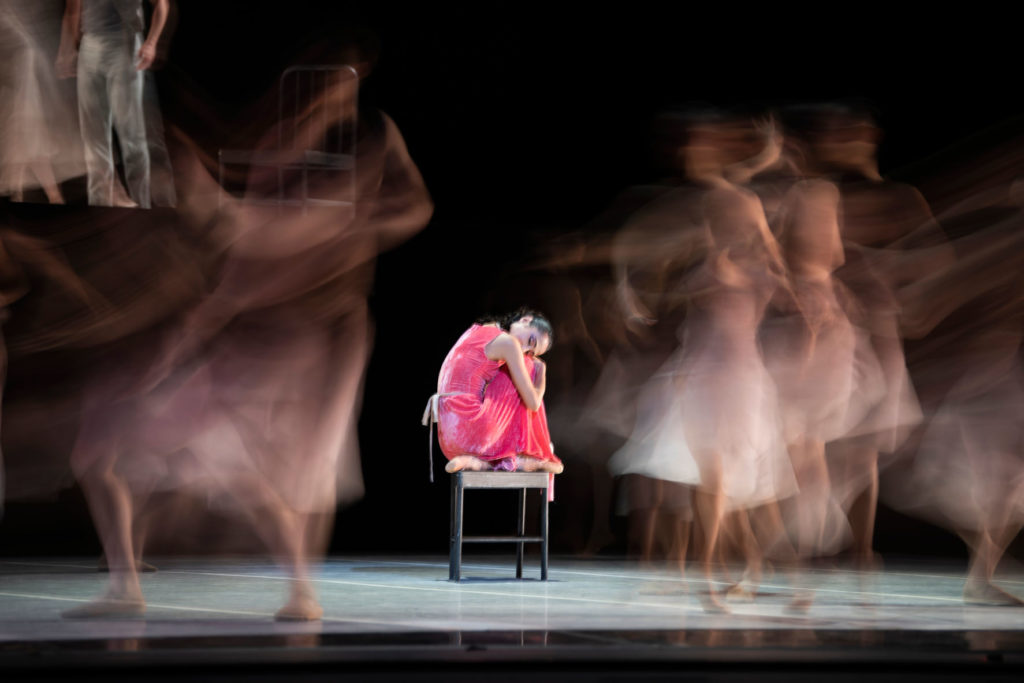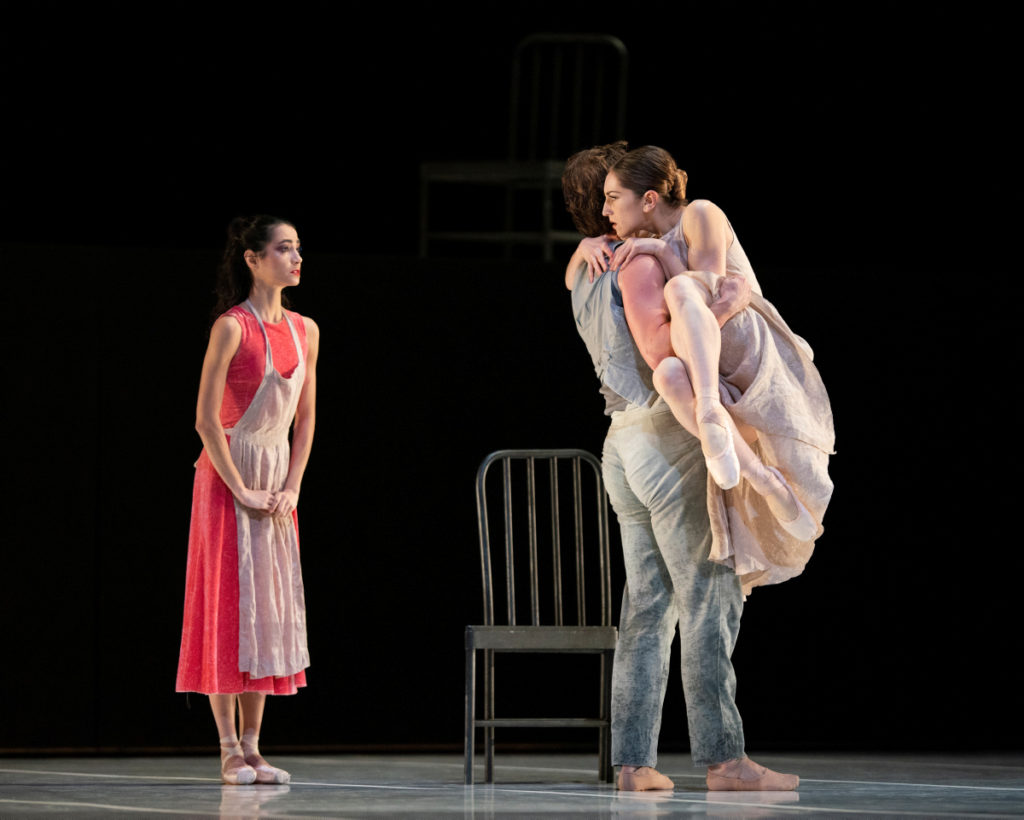About Snowblind
Bittersweet. Beautiful. Human.
In her first work for San Francisco Ballet, British choreographer Cathy Marston zeroes in on the heart of Edith Wharton’s 1911 novella Ethan Frome. Her ballet, Snowblind, tells a story of repression, love, desperation, and dependence—the forces underlying Wharton’s tale, a love triangle. After watching rehearsals, Artistic Director and Principal Choreographer Helgi Tomasson commented that Marston, a storyteller at her core, “was approaching it from the drama, as you would with an actor, and that is the driving force to make this work come to life.”
Acting is central to Marston’s method. In Snowblind, she draws us into the lives of Wharton’s three central characters—Ethan, a farmer trapped by poverty, loneliness, and a dried-up marriage; his somewhat older wife, Zeena, a hypochondriac; and Zeena’s helper, beautiful young Mattie. The snow that dominates the setting, embodied by 11 dancers, becomes a metaphor for Ethan and Mattie’s passion and torment. The two are blinded by love (or infatuation) and winter whiteout and bound together when they sacrifice themselves, in an attempted suicide, to the brutal environment. For SF Ballet, Marston wanted to tell an American story, which is one reason she chose Ethan Frome. “What I love about it is there’s a lot of passion,” she says. “And I liked the elemental feel”—the snow and the wind, which she realized could reinforce the story’s powerful emotions. Best of all is the ending, with its complexities and room for interpretation.

In developing her ballets, Marston begins with emotions. She uses prompts in creating movement for specific characters and situations: among them “torn” and “hope” for Ethan, “numb” and “bitter” for Zeena, “dreamy” and “hyperventilate” for Mattie, “caress” and “stinging” for the snow. At times she sends the dancers off with her assistant Jenny Tattersall to explore how these words feel in the body. This found movement, rooted in emotion, “brings a few non-balletic steps in, which I think helps pepper [the choreography],” Marston says. “It’s like putting flecks of black on a watercolor.”
In Snowblind, every move is character driven. Alone with his wife, Ethan (Principal Dancer Ulrik Birkkjaer) shows despair, his arms like a pendulum marking endless time. “Show us your pain,” Marston says to Principal Dancer Sarah Van Patten as Birkkjaer lifts her, and Van Patten, her body rigid, adds an agonized twist of her head. Their bodies show anger and resentment, the pain of their coexistence. In contrast, dancing a suppression-fueled, erotic pas de deux, Birkkjaer and Principal Dancer Mathilde Froustey (Mattie) are desire personified. They dare not kiss, yet they cannot stay apart. Even Mattie’s apron becomes an extension of their desire.
Abstraction is key for Marston, in both choreography and design. “I’m not working with the classical vocabulary, so all these details of movement do get rather drowned by a big dress [in a period piece],” she says. “We start at the point where a story is based, and I will keep challenging the designers to reconsider how we can suggest something without spelling it out. I love ambiguity in the right moment; it can be quite beautiful.”

Ambiguity is exactly what she wants—and achieves—in the ballet’s ending, a trio that illustrates the characters’ struggles but also their interdependence. “There’s warmth; there’s passion” in the way the story ends, Marston says. The book seems like “a horror story; it must be living hell for the next 30 years, those two women and Ethan in a room together with no way out. And that is one reading. What I’m trying to do is look under that surface—how do you live with someone? Well, you have to forgive a little bit, and you have to take their weight, and you have to trust.”
Tying story and movement together is the music, a compilation of pieces by Amy Beach and Arthur Foote, arranged and augmented by composer Philip Feeney. For the ballet’s ending, Marston chose Arvo Pärt’s Lamentate—delicate, haunting, and forgiving. Ethan, Zeena, and Mattie, moving together, inseparable and acquiescing, literally taking one another’s weight, are “a tangle that traps and supports at the same time,” Marston says. “That’s what I’m trying to get at, and to make something that is bittersweet, beautiful, and human.”
Marston’s Snowblind is part of SF Ballet’s 2021 Digital Season. It was performed as part of Program 05.
by Cheryl A. Ossola
Header Image: San Francisco Ballet in Marston’s Snowblind // © Erik Tomasson








